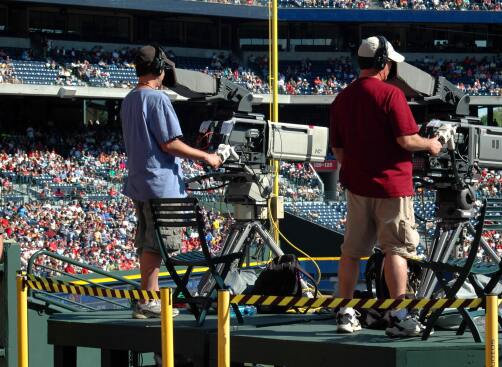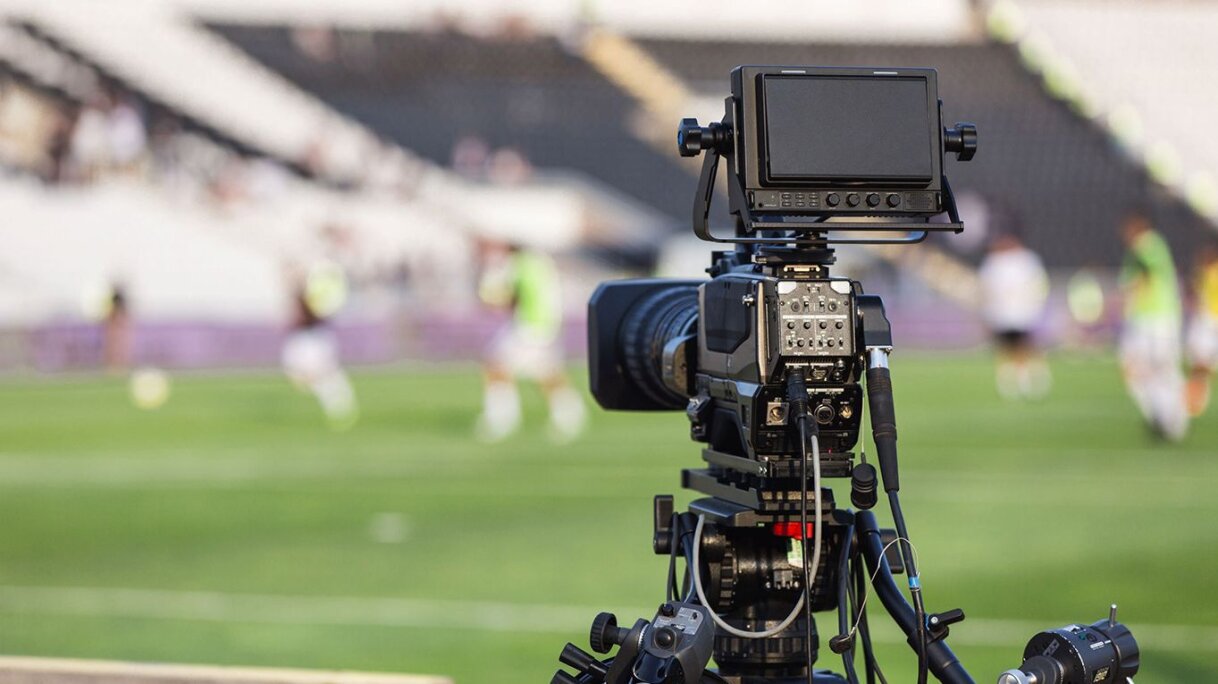The Role Of Sports Broadcast Design In Enhancing Fan Experience
Sports broadcasting has come a long way since its inception. In the early days of sports broadcasts, the focus was on simply delivering live coverage of games and events to viewers.
But in today's world, broadcasters are looking for ways to create an immersive experience that engages fans beyond just watching the game.
To do this, they are turning to broadcast design as a way to enhance fan engagement and give them new perspectives on their favorite teams and athletes.

We will explore how sports broadcasters can use design elements such as graphics, animation, and sound effects to create an engaging viewing experience for their audience and discuss some of the challenges associated with designing effective broadcasts that capture viewers’ attention while still staying true to traditional values like accuracy and fairness in reporting.
Sports Events and Advertising
Sports broadcast design also plays a significant role in advertising during sports events. With the growing popularity and viewership of sports broadcasts, advertisers have recognized the potential to reach a large and engaged audience.
Through the strategic placement of banners and graphics, broadcasters can seamlessly integrate advertising into the viewing experience.
These banners can be strategically placed in high-traffic areas - on parking lots, around the stadium, or incorporated into on-screen graphics, providing visibility to sponsors and generating additional revenue for sports organizations.
By leveraging the immersive nature of sports broadcasts, advertisers can effectively capture viewers' attention and create brand awareness.
The integration of advertising into sports broadcast design has become a win-win situation, benefiting both broadcasters and advertisers while enhancing the overall fan experience.
How Sports Broadcast Design Enhances Fan Experience
Sports broadcast design has become an integral part of creating an immersive experience for fans.
Through the use of graphics, animation, sound effects, and other elements, sports broadcasters can create a viewing experience that is engaging and entertaining.
By using these tools to highlight key moments in the game and emphasize certain athletes or teams, broadcasts can draw viewers in and help them feel connected to the game.
Broadcasters can use broadcast design elements to create a visually stimulating backdrop for viewers and provide additional context about the game or athletes.
This helps to engage fans who may not be as familiar with certain aspects of the sport and further enhances their viewing experience.
Broadcast design can be used to help keep viewers up-to-date on the latest news and stats, which can help create a more informed viewing experience.
All of these elements combined together help to create an enjoyable and unforgettable viewing experience for fans.
By using broadcast design strategically, sports broadcasters can enhance fan engagement and keep viewers coming back for more.
Design Elements Used In Sports Broadcasting
Sports broadcasting has come a long way with regard to design elements used to enhance the viewing experience.
Designers have a wide variety of tools at their disposal for creating visually appealing graphics, animations, and sound effects.
Some of the elements we'll overview are gameday graphics, animations, and music or video vignettes.
Gameday Graphics
Gameday graphics are one of the most important and effective elements of sports broadcast design.
Through the use of on-screen graphics, broadcasters can provide viewers with real-time stats, updates, highlights, player profiles, and other information related to a game or event.
This includes team logos, scoreboards, replay angles, lineups, and other visuals that can help viewers gain context and understand what's happening on the field.
Animations
Animations play a key role in sports broadcast design, as they are able to add visual interest and excitement to any game or event.
Animations can be used to show replays of big plays, highlight key moments, or feature athletes in a creative way.
Animations can also be used to display stats and other information about the game or event, providing viewers with more in-depth knowledge of what's happening on the field.
Music Or Video Vignettes
Music or video vignettes are clips that are broadcast before or after games or events to create a sense of atmosphere for viewers.
These clips can be used to feature athletes and their accomplishments or to celebrate the teams or organizations involved.
They typically combine visuals with music, sound effects, and voice-overs in order to create an impactful viewing experience.
Challenges Of Effective Broadcast Design
Although broadcast design can be a powerful tool for creating an immersive and engaging viewing experience, there are several challenges that broadcasters must face in order to successfully utilize it.
One of the main challenges is finding the right balance between creating visual elements that capture viewers’ attention while still staying true to traditional values like accuracy and fairness in reporting.
Another challenge is ensuring that the broadcast design elements don’t overpower or distract viewers from what is actually happening in the game, which can lead to a loss of interest.
Designers must also be aware of any time constraints and make sure their visuals are able to convey all relevant information in an efficient manner.
Furthermore, broadcasters need to know their audience in order to create visuals that are appropriate and engaging.
This includes understanding the type of viewers they are targeting, what kind of graphics and animations they find most appealing, and which elements will best capture their attention.
Broadcast designers must be sure to use their visuals strategically throughout the broadcast in order to ensure that viewers stay engaged from start to finish.
Examples Of Successful Broadcast Designs
A successful broadcast design should be able to capture viewers’ attention, provide useful information, and entertain audiences at the same time. ESPN's "SportsCenter" is a great example of this type of effective broadcast design.
The program features dynamic graphics that are constantly updated with stats, highlights, and other relevant information about current sporting events.
The show has a unique style and visual aesthetic that viewers have grown to recognize and appreciate.
Other examples of successful broadcast designs include the NFL's "Sunday Night Football" and MLB Network's “MLB Tonight” which both feature engaging graphics, animations, music, and sound effects.
All of these networks use their visuals strategically in order to capture the attention of their viewers and keep them engaged throughout the broadcast.
Closing Thoughts
Broadcast design is a powerful tool for creating an immersive and engaging viewing experience, but it can be difficult to get it right.
Designers must ensure that their visuals are accurate, appropriate for the audience they’re targeting, and strategically placed throughout the broadcast in order to capture viewers’ attention from start to finish.
Examples of successful broadcast designs include ESPN's "SportsCenter", NFL's "Sunday Night Football" and MLB Network's “MLB Tonight” which all feature dynamic graphics combined with animation, music, sound effects, and other elements.
With these tips in mind, broadcasters should be able to create effective broadcasts that entertain audiences while providing useful information about current sporting events.
Cover Credits: Giggabox


.png)


Leave a Reply